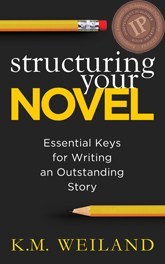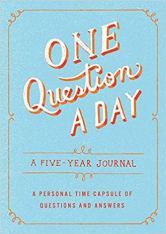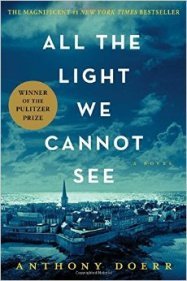6 Steps to Create Realistic (and Powerful) Scene Dilemmas
 Scenes are the building blocks of your story. As go your scenes, so goes your story. If the scenes present a solid chain of deliberate structure, that’s what your story will be. But if too many scenes lack focus or dramatic impetus, so will the story. Every aspect of scene structure is important. Any aspect that is accidentally overlooked can throw off the balance of the entire narrative. But of all the many aspects of scene structure, those that are among the most powerful are also the easiest to overlook: scene dilemmas.
Scenes are the building blocks of your story. As go your scenes, so goes your story. If the scenes present a solid chain of deliberate structure, that’s what your story will be. But if too many scenes lack focus or dramatic impetus, so will the story. Every aspect of scene structure is important. Any aspect that is accidentally overlooked can throw off the balance of the entire narrative. But of all the many aspects of scene structure, those that are among the most powerful are also the easiest to overlook: scene dilemmas.

First, a quick refresher on classic scene structure (which I discuss in much more depth in my book Structuring Your Novel):
Part 1: Scene (Action)
a. Goal (character wants and tries to get something that will aid in reaching the overall plot goal)
b. Conflict (character is met with an obstacle to obtaining the scene goal)
c. Outcome/Disaster (character’s attempt to reach the goal meets some end, which is usually “disastrous” in the sense that the character either fails to achieve the goal or achieves only part of it)
Part 2: Sequel (Reaction)
a. Reaction (character reacts to the outcome)
b. Dilemma (character must now figure out how to overcome the new complications that resulted from the last attempt while still moving forward toward the main plot goal)
c. Decision (character decides upon a new scene goal as a more effective response to the new complications)
>>For a complete discussion of scene structure, see my series How to Structure Scenes in Your Story.
Take note of our little friend the dilemma in section 2.b. At first glance, scene dilemmas can seem either extraneous (how, after all, is the dilemma different from the disaster?) or too straightforward to offer much interesting drama (readers just read about the disaster after all, so do they really need to see characters rehashing it in a dilemma segment?).
There’s truth to both these reactions. But another truth is that within the dilemma part of any scene resides the opportunity to find the true realism and drama that mimics our own real-life processes.
Let’s take a look!
Scene Dilemmas Are About… Emotion
We face many dilemmas in our daily lives. Some are so small and easily resolved we barely notice they are dilemmas.
For example, there’s currently a big pothole in the dirt road in front of my house. Every time, I drive down that road to reach the highway, I am confronted with the dilemma of this huge bump in the road. So what do I do? Do I spend the mental equivalent of pages upon pages recognizing the noxious jolt this hole could give my car? Do I go over my options for confronting the hole? Do I then finally decide upon my course of action in a deeply dramatic way?
Not really. I see the pothole. I turn the steering wheel to avoid the pothole. Dilemma solved.
But other dilemmas aren’t so easily solved. They require a bit of thought—or even a good deal of anguish.

One Question a Day: Five-Year Journal
For the last seven years I’ve enjoyed keeping a “Question a Day” journal. It’s a five-year journal (I’m on my second one), which allows me to answer the same question on the same day for five years. As time goes on, it’s interesting to look back at how I’ve answered the question differently from year to year.
Questions such as “what are you most worried about?” are particularly enlightening. Almost inevitably, I find that the thing I was most worried about last year or the year before that or five years ago is something I’d since forgotten. It’s a moment of Oh yeah, I was really fussed about that, wasn’t I?
Not only has seeing this provided me perspective on how useless and unnecessary worrying usually is, it has also given me perspective on how big dilemmas often seem when we’re in the midst of them.
As writers, we can take note of this in crafting scene dilemmas. Too often, we’re in such a hurry to get our character to the big scenes that we forget the character doesn’t know he’s not already in the big scene. He’s immersed in the present moment. As he’s taking a breather to process what just happened and what he gained and/or lost in his most recent effort, he’s experiencing emotions. Maybe there’s major adrenaline or endorphins still pumping. Or maybe it’s just a twist of anxiety in his stomach—-which he doesn’t want to acknowledge but can’t quite escape (you know the feeling).
The point is that whatever he’s feeling, he’s feeling it. Think about the scene from the classic western The Magnificent Seven, in which the heroes begin to understand the current concerns of their antagonist, the bandit chieftain Calvera:
Calvera isn’t worried about food for winter. He’s worried about the food his men haven’t eaten for the last three days. The price of corn is going up. They’re starving.
Calvera’s plot goal started out (and continues to be) about feeding his men for the winter. But at this point, now that his back has been put against the wall, that’s the last thing on his mind. Now he’s just worried about the present situation—his hungry, mutinous men.

A 6-Step Checklist for Getting the Most From Your Scene Dilemmas
In a year (or even a day), your character may no longer be feeling the urgency of any given scene dilemma. But within the scene itself, the dilemma matters. (If it doesn’t matter, it isn’t important enough to be a scene dilemma—a realization that should take you back to reconsider your previous scene outcome/disaster. If it does matter, then you have to make sure you’re really inhabiting that emotional space as a writer.)
Here are six steps you can use to evaluate scene dilemmas. This approach will help you take full advantage of important scene dilemmas—and, just as notably, it will help you determine which scene dilemmas are important.
1. Own the Scene’s Emotional Space
Don’t let yourself brush over scene dilemmas. Realism in fiction is the result of solid cause and effect, and solid cause and effect is grounded by your character’s reactions to events. Don’t rush through any reaction scene just to get back to “the good stuff” (because it’s all supposed to be good stuff, right?). Whenever anything happens that complicates your character’s journey toward the plot goal, there must be an emotional response.
Depending on the severity of events, the character may be experiencing emotions that range from annoyance to delight to terror. But he’s feeling something (the essence of the “reaction” part of the sequel, which walks hand in hand with the dilemma). More than that, the feeling will exacerbate or be exacerbated by the fact that what just happened isn’t a closed incident. The story’s not over. A dilemma, after all, means the character now inhabits that emotionally vulnerable place of knowing she’s about to have to make another choice.
2. Put Yourself in the Character’s Skin
Don’t write the first emotional response that comes to mind. It’s important to vary your character’s emotional reactions throughout the story. After all, if he’s angry all the time, that’s just going to get boring. But it’s even more important to make sure the emotional response is true.
Use that writer’s imagination of yours to project yourself into the character’s skin. What would you be feeling in this situation? And don’t just think about the emotions themselves. What would you be feeling physically if you were confronted with this dilemma? Think particularly about your stomach and solar plexus. Emotions manifest strongly there, even when we’re not consciously acknowledging them.
3. Rate the Intensity of Your Character’s Emotional Response
As noted in the example about my pothole, not all scene dilemmas are created equal. Just as in life, the progression of your story will include dilemmas that span the gamut from trivial to life-changing. Your character’s reactions must also span that gamut.
Usually, the character’s reaction will be in direct proportion to whatever is at stake in the scene’s dilemma. But the character’s personality will also be a factor. Dangerous circumstances that might tie up most of us in nervous knots will be the very situations where other characters are most comfortable.
4. Determine How Best to Dramatize the Character’s Response
Remember the (general) rule: . This is a challenge to show, not tell, what your character is feeling. Saying she’s nervous or even that “her stomach is in knots” is the easiest but often least effective way to convey a character’s emotional reaction.
Rather, take a page from the movies and try to visually represent the scene’s emotional weight—preferably in ways that advance the plot by either adding information or contributing to the character’s subsequent scene goal. You can also make use of subtext in dialogue: have characters react to what’s happened by deliberately not commenting on it.
5. Avoid Melodrama
In your quest to take full responsibility for the emotional weight of all your scene dilemmas, be careful not to go overboard in the opposite direction. Turning every scene dilemma into an existential crisis will strain your readers’ suspension of disbelief. Not only will this fever pitch of emotion eventually grow boring thanks to a sheer lack of variation, it will inevitably make your characters and your story appear ludicrous.

All the Light We Cannot See by Anthony Doerr
Note the difference between downplaying the drama of emotion versus just downplaying the emotion altogether. Look to master works of subtext such as All the Light We Cannot See by Anthony Doerr for how scenes of tremendous emotional weight can be portrayed all the more powerfully by writing around the emotion.
6. Summarize Small Dilemmas
At the beginning of the post, I mentioned that some scene dilemmas will seem either too extraneous or too straightforward to bother dramatizing. You will have to use your writer’s instinct to determine which scenes fit these categories and then downplay them appropriately.
Proper scene structure—in which all six parts of the scene are in place—is important for creating dramatic flow and narrative momentum. But this does not mean every part of the scene must be fully fleshed out. Sometimes parts of the structure can be implied or summarized without losing any dramatic power. Recognizing when this is appropriate largely comes down to developing a good sense for pacing. If you’re concerned you may be summarizing too much or summarizing the wrong scene, consider whether the character is expressing an emotion that qualifies as one of the following:
a) different from what might be expected.
b) different from that expressed in the last scene.
c) directly contributive to a change in mindset or motive for the following scene.
d) an emotion readers will enjoy experiencing alongside the character.
If any of these jump out at you in relation to a scene dilemma, you’ve probably found emotional heft that’s worth fully dramatizing.
***
Scene dilemmas (and reactions and decisions) can often be the meatiest and and most fulfilling parts of a story. Although the more action- and plot-oriented scenes are just as important, don’t forget that much of the character development will happen in the reaction phase of the scene sequel. Have fun with them!
Wordplayers, tell me your opinions! What’s your favorite thing about writing scene dilemmas? Tell me in the comments!
http://www.podtrac.com/pts/redirect.mp3/kmweiland.com/podcast/scene-dilemmas.mp3
Click the “Play” button to Listen to Audio Version (or subscribe to the Helping Writers Become Authors podcast in iTunes).
___
Love Helping Writers Become Authors? You can now become a patron. (Huge thanks to those of you who are already part of my Patreon family!)
The post 6 Steps to Create Realistic (and Powerful) Scene Dilemmas appeared first on Helping Writers Become Authors.




